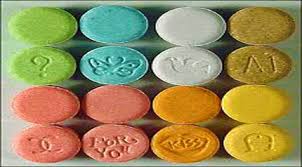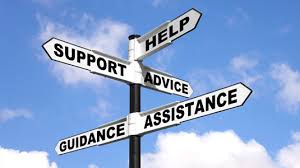Rehab Articles

designer drugs, club drugs
1. 5-MeO-AMT- This is one of the designer drugs that is becoming more widely available in the USA. This substance may also be referred to as alpha or O-DMS, and it is a hallucinogenic drug with effects that can last about 18 hours per use. This drug is one of the tryptamines, and it may be snorted or smoked but a favorite way to use it is to dissolve the powder in alcohol or water and then drip it onto sugar cubes, small paper squares, or candy pieces.
2. Ecstasy- This is one of the club drugs that is very popular, but it can also be very dangerous. Also known as MDMA, ecstasy lowers inhibitions. It can be found in pill form with a wide range of cute logos or pictures on the tablet. Much of the drug sold today as ecstasy does not contain much MDMA , if any at all. These pills can contain many substances, some of them harmful or even toxic.
3. GHB- GHB is one of the designer drugs often sold in clubs and at raves, and it is a central nervous system depressant. The human body does have a small amount of this substance which is produced naturally, but this is in amounts far lower than when the drug is taken orally.
4. Ketamine- As far as club drugs fo ketamine seems to be a popular favorite, in spite of the fact that Special K as it is known on the street is actually an anesthetic used by veterinarians to treat animals during surgery. This drug has dissociative effects on the user.
Rehab Articles

bipolar disorder, risk taking
A new medical study by researchers at Manchester University, UK, probes the actual neuroscience behind the risk taking that is common in individuals with bipolar disorder. This is a form of mental illness that causes the individual to switch between feeling mania and depression, and are considered rapid cyclers who can experience numerous fluctuations on a daily basis. When the individual is experiencing a manic episode then they are far more likely to engage in risk taking and give in to compulsive behavior. This not only affects the individual but also their family and friends. The medical study involved 40 participants, 20 who were diagnosed with bipolar disorder but who were not currently taking any medications for mental illness and 20 who were not suffering from bipolar disorder at all.
According to the lead researcher on the study involving bipolar disorder and risk taking, Professor Wael El-Deredy “The greater buzz that people with bipolar disorder get from reward is a double-edged sword. On the one hand, it helps people strive toward their goals and ambitions, which may contribute to the success enjoyed by many people with this diagnosis. However, it comes at a cost: these same people may be swayed more by immediate rewards when making decisions and less by the long-term consequences of these actions.” The actual study results can be found in the journal Brain. The study may help make treatment for bipolar disorder more effective in the future, so that the risk taking component can be better controlled.
Rehab Articles

substance abuse problems, drug or alcohol treatment
The saying once an addict always an addict is not a true statement, and this myth can be very damaging because it can discourage those with substance abuse problems from seeking the drug or alcohol treatment that they desperately need. There is help for addiction, and substance abuse does not have to continue for life. A permanent recovery can be reached, but only if the right drug or alcohol treatment program is used and the user truly wants to stop and finally deal with their substance abuse problems. Rehab has been shown to help even those individuals who were forced into a treatment program by the courts, but the right program may not give the desired results and will make a relapse far more likely once a treatment program is completed.
The right drug or alcohol treatment can stop substance abuse problems once and for all. In order for these problems to be eliminated the individual must work through the causes and contributing factors which created the substance abuse problems in the first place. The only way that this can be done is with individual counseling on a regular basis. Group therapy during drug or alcohol treatment has a place, and it helps the individual realize that they are not alone and that others struggle with the same substance abuse problems. Individual counseling is also essential though, because each user has different reasons why the drug or alcohol abuse occurs. One on one sessions can help uncover old wounds which are invisible, and finally resolve these past traumas once and for all.



